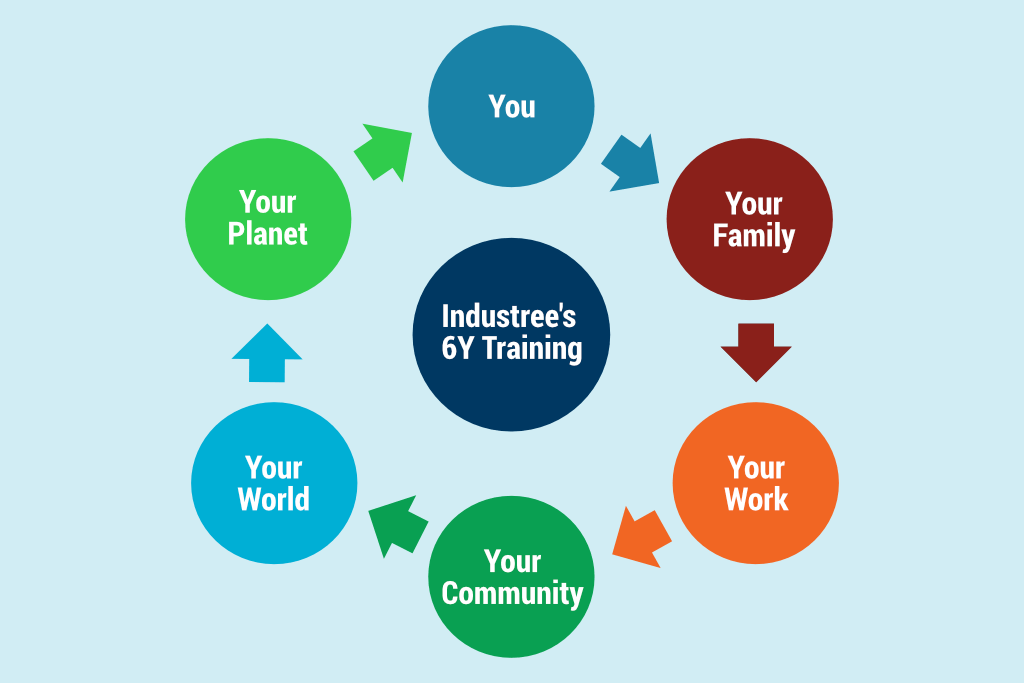
The Collaborations team within Catalyst 2030 is always looking for ways to foster deeper and more meaningful connections within the community. One of the ways to achieve this is through a series of workshops that allow for peer-to-peer learning and sharing on systems change collaboration creation and success.
Earlier this month Jacob Matthew, CEO Industree Foundation, Design Principal Srishti Manipal Institute of Art, Design and Technology, was invited to share his wisdom on design and design thinking.
As a starting point for his presentation, Jacob explained that social enterprises maximise a positive impact on people and on the planet, in a profitable way. Design thinking for social enterprises solves wicked problems by using a creative process to develop systemic and holistic solutions.
“The difference between business as usual and design thinking,” he said, “is that business as usual starts with preconceived ideas of what the end solution should be. When you use design thinking you work in a very emergent way – first doing and then figuring out.”
According to Jacob, design thinking by itself has often failed us because people and planet have not been at the centre of everything we do.
“One of the reasons that we are chasing the SDGs is because designers have been very successful in doing things without really considering the consequences of what they do. What we need now is a “re-future” because what we have done is to “de-future” the planet for ourselves.”
He called for social entrepreneurs to move from advising and consulting to the kind of collaborative capacity building that will bring about transformative change.
This is only possible with an increased emphasis on empathy. He suggested that deep immersion, deep listening and looking beyond the obvious are all important to discern the signals, make connections and find patterns in the communities we are working with. The breakout exercise included having participants imagine their organisations in 100 years time – how many communities can say that they challenge their members to do that?!
Jacob acknowledged that this takes time, and that social entrepreneurs should be prepared to spend whatever time is needed. You need to ask all the ‘why’ questions until you get the insights that only come after a deep immersion in the community.
He pointed out that as leaders, we are often impatient and tempted to be solvers, and urged Catalyst 2030 members to create enduring value by equipping communities to be solvers themselves.
As a caveat, he reminded his audience that co-creation is a journey, and that it is important not to be discouraged if it takes time to build a significant number of fellow travellers.
In closing, he urged fellow social entrepreneurs to ensure that their organisations have teams that are made up of creators, preservers and destroyers. Borrowing from Indian mythology, he explained that the destroyers are vital because they stop us from holding onto things that are no longer useful or relevant.
If you would like to check out the recording of Jacob’s session, please keep an eye out for it on the Collaborations resources pages of the website: https://catalyst2030.net/collaboration-resources/ or view it at https://www.youtube.com/watch?v=darnKteL87w.
For those who would like to think through the different workshop activities that were used in the breakout sessions, here you go, please let us know how you got on!
ACTIVITY 1
Press note from the future: Imagine you have been wildly successful at your mission and it’s reported in a press release 5 years from now. Please write that press release in as granular detail as you can.
ACTIVITY 2
Imagining the unimaginable: If you were to look through a telescope that shows the future, where would you see your enterprise a 100 years from now?
- To make this vision a reality, what do we need to do in the next 50 years?
- To make this vision a reality, what do we need to do in the next 10 years?
- To make this vision a reality, what do we need to do in the next 5 years?
ACTIVITY 3
Visualisation: Visualise yourself at the age of 90 you are healthy and you are lucid, your time on earth is up and you know it. Your great grand-daughter / godchild/ little person skips into your room and asks you, what did you do in your life? What do you say?
6 year-olds love stories, but they cannot be too long. The story and its message needs to be simple and understandable…. No jargon. Remember this is not advise to your great grandchild on how to live their lives but an account of how you lived yours and why it is worth remembering.
